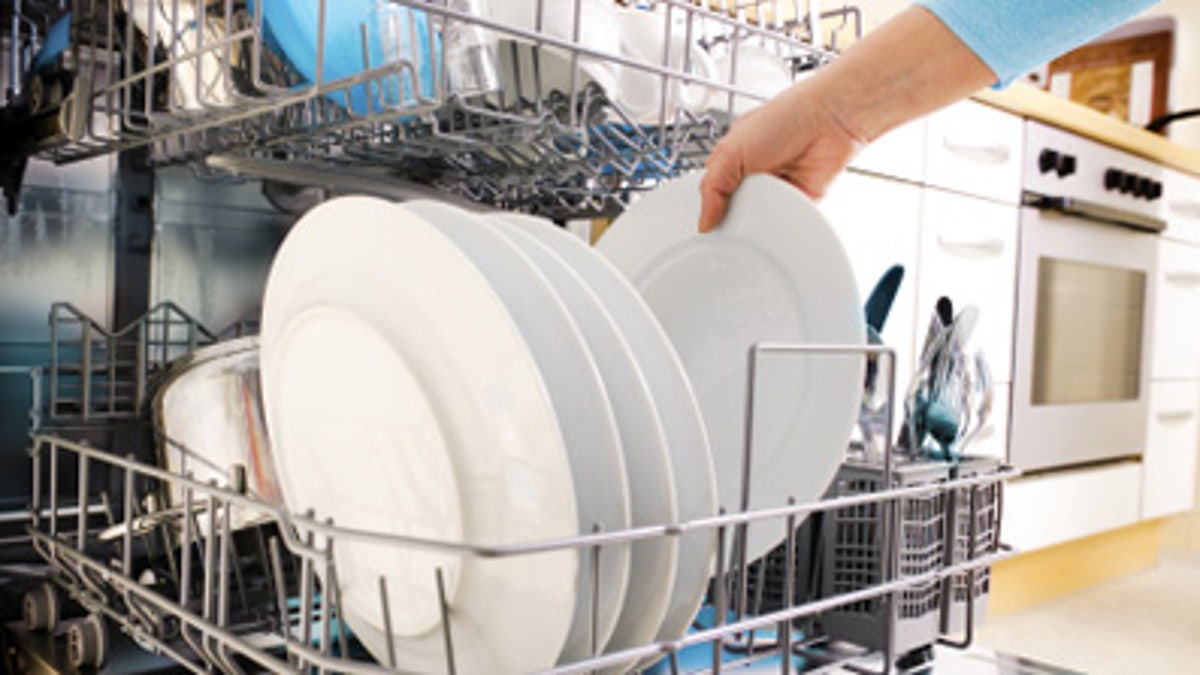
(iStock)
You expect your kitchen floor to be germ-ridden. Same goes for your garbage can and toilet. You probably even suspect that your bed sheets are filthy. And rightly so: More than 80 percent of U.S. beds, according to one study, are home to dust mites—drawn to the neighborhood to feast on dead skin cells.
Little did you know, however, that the very tools we rely on to keep our homes clean can actually conspire against us and make us sick.
Et tu, vacuum cleaner? Yes indeed. Researchers at the University of Arizona found fecal matter on 50 percent, E. coli on 13 percent, and mold on 100 percent of vacuum brushes they tested. Recently, we discovered four more surprising places where germs are making themselves at home.
Washing machine
Even if your drawers are free of skid marks—please, guys—trace amounts of feces still cling to your dirty underwear, said Charles Gerba, a microbiologist at the University of Arizona. "If you wash a load of undergarments, you transfer about 500 million E. coli bacteria to the machine." This can contaminate other clothing items, which may harbor germs of their own.
Stay clean: Wash most whites first, and use chlorine bleach. "It sanitizes the machine," Gerba said. Then dedicate a load to underwear, using hot water (150° F) and a color-safe bleach substitute. Once a month, run an empty cycle with bleach to wipe out any lingering germs. This is especially important for front-loading machines; water tends to settle in the bottom of these machines, allowing bacteria to proliferate, Gerba said.
The Dirtiest Thing You’ll Touch Today
Dishwasher
Crusty scrambled eggs = bacterial breakfast. "When you allow dishes to accumulate for a few days, growth of bacteria invariably increases," said Philip Tierno Jr., director of microbiology and immunology at NYU's Langone Medical Center and the author of The Secret Life of Germs. "And even if you can't see it, there is viable foodstuff in the rinse water to feed them." Plus, the dishwasher's door gasket may be contaminated with fungus and black yeast. "That outer rim never reaches a temperature high enough to kill everything off."
Stay clean: If you don't plan on running a load soon, rinse your plates with a mild bleach solution (a shot glass of bleach to a half quart of water). This kills surface organisms so you can let dishes accumulate, Tierno said. Use the same solution to periodically clean the gasket.
Are You Smearing Fecal Matter on Your Face?
Toothbrush
A 2011 study in Microscopy Research and Technique found that nearly half of never-before-used brushes were tainted with bacteria. It gets worse when you put the bristles to work. "Your mouth contains more than 500 different types of bacteria," Tierno said. And if you leave your brush sitting out, it could collect fecal bacteria. "Unless you have a low-flow toilet, aerosolized droplets splatter when you flush. They can go pretty far—up to 20 feet."
Stay clean: Regularly run your toothbrush through a clean dishwasher, using standard dish detergent. A 2011 study in the American Journal of Dentistry found that this method eradicated nearly all disease-causing bacteria. Another option is to soak your brush in a mouthwash that contains cetylpyridinium chloride, such as Crest Pro-Health Complete Rinse, for 20 minutes; doing this can also beat bacteria, the study found. To avoid flying feces, Tierno said, simply store your brush in a closed cabinet.
The Office Habit That’s Killing You
Sponge
"The sink is the dirtiest area in the kitchen," Tierno said, "and the sponge is the dirtiest item in the sink." In a recent Simmons College study, nearly a third of dishcloths and kitchen sponges tested were laden with staph (including some with MRSA, the antibiotic-resistant strain of staph)—twice the rate of contamination in toilet bowls the researchers swabbed.
Stay clean: Throw your wet sponges into the microwave and zap them on high for 1 minute.
WHEN THE SHEET HITS THE MAN
Germ-ridden linens need your attention, too
Bedsheets
Clean once a week: Wash sheets in hot water and a splash of bleach. If they're colored, use a product that contains peroxides, such as Clorox 2 Stain Fighter & Color Booster.
Towels
Every 1 to 3 days: Wash 'em like sheets: hot water, hot dryer. Most vegetative bacteria die if you hang towels in a dry climate, so never leave them in a damp pile. In dry months, you can get away with fresh towels every three days or so.
Sign-up: Get the Daily Dose Newsletter and get the latest fitness techniques, weight loss ideas, relationship advice, health tips, and style news.
